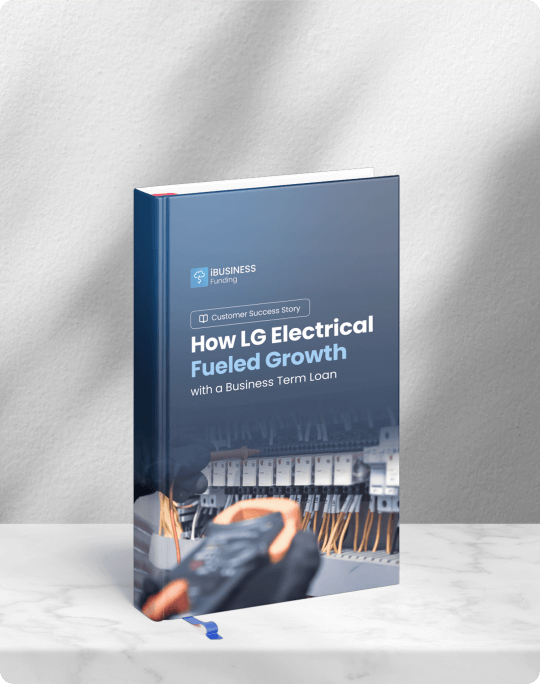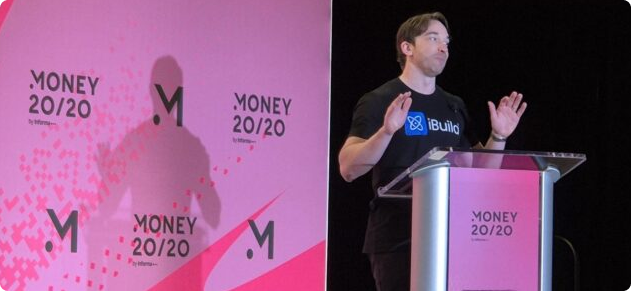
Distribution of SBA 7(a) Funding Among Business Structure Types: Comparisons & Trends FY17 to FY24
Choosing the right business structure is one of the most critical decisions for any entrepreneur, influencing everything from taxation to liability protection and access to capital. In FY2024, the top three business structures receiving the largest share of SBA 7(a) loan funding were Limited Liability Companies (LLCs), Corporations (C Corps), and Subchapter S Corporations (S Corps). Leveraging powerful data from LenderAI Insights and the Small Business Association, we broke down each of these leading segments and uncovered some notable shifts in lending trends.
Comparing FY24 to FY17: Shifting Business Lending Trends
When comparing SBA 7(a) data from FY17 to FY24, it's clear that the distribution of SBA 7(a) funding across different business structures has evolved significantly over the past seven years.
%2520Loan%2520Approvals%2520by%2520Business%2520Type%2520%25E2%2580%25A8(Approval%2520Amount)%2520(1).png)
Overall Loan Volume Growth
In FY24, SBA 7(a) approvals surged to 70,242 loans totaling $31.12 billion, with an average loan size of $443,097.* This marked a 12.5% increase in total loan volume since 2017 and a 9% increase in average loan size. A key driver of this shift is the rising dominance of LLCs, which now account for 62.3% of SBA funding, up from 51.5% in 2017—a sign that business owners may be prioritizing tax flexibility, liability protection, and ease of management.
Meanwhile, S Corps have held steady, maintaining 6.3% to 6.4% of total funding, while sole proprietorships have declined sharply from nearly 5% to just 2%, reinforcing the shift toward structured, scalable business entities. Together, these trends illustrate how SBA-backed lending is evolving to meet a shift in business formation trends, tax planning strategies, and even lender preferences.

Understanding the Top Three Business Structures
Limited Liability Company (LLC)
Limited Liability Companies (LLCs) have become a dominant force in SBA 7(a) lending, securing over $19 billion in approved loans in FY24. This trend highlights the growing appeal of LLCs, driven by their tax flexibility, liability protection, and ease of operation—qualities that resonate well with small and medium-sized businesses. The steady growth in LLC lending, particularly the spike in approvals post-2021, points to a recovery phase following the pandemic as businesses adapted to new financial landscapes.
The decline in funding to sole proprietorships could indicate that more entrepreneurs are opting for the stability and scalability that LLCs offer. For lenders, this shift signals a need to focus on businesses that are well-positioned for long-term growth, while for entrepreneurs, the data reinforces the advantages of choosing an LLC not only for legal protection but also for improving access to financing.
%25C2%25A0.png)
Corporation (C Corp)
C Corporations (C Corps) remain a strong presence in SBA 7(a) lending, capturing 27.5% of total funding in FY24 with over $8.5 billion in approved loans. Their ability to raise capital through stock issuance and their strong liability protection make them an attractive choice for businesses planning to scale. While they face challenges like double taxation, their structured financial reporting, regulatory compliance, and established credit profiles could make them appealing to lenders.
The share of total SBA 7(a) loans going to C Corps has declined slightly over the years, dropping from 34.4% in 2017 to 27.5% in 2024. This dip, especially between 2020 and 2022, is likely a reflection of shifting business preferences and the impact of economic uncertainties. Still, C Corps remain a solid option for entrepreneurs looking to expand. For lenders, the steady presence of C Corps as a top segment receiving SBA 7(a) funding signals confidence in businesses with the structure and stability needed to scale successfully.
%25C2%25A0.png)
Subchapter S Corporation (S Corp)
In FY24, Subchapter S Corporations (S Corps) secured $1.97 billion in SBA 7(a) loans, marking a strong recovery and sustained growth after experiencing fluctuations in recent years. From 2017 to 2019, approval counts and amounts declined, likely due to economic uncertainty and businesses turning to alternative financing options. The noticeable uptick in 2020, despite the challenges of the pandemic, could be attributed to the heightened need for financial relief and the availability of emergency funding programs like the Paycheck Protection Program (PPP), as S Corps—often established businesses with tax advantages—were well-positioned to take advantage of these programs, leading to an increase in both approval count and amount.
This upward trend continued in 2021, with approval amounts rising significantly to over $2.2 billion as businesses sought larger loans for growth and recovery. While their share of SBA 7(a) lending remains smaller compared to LLCs and C Corps, the stability of S Corps in the lending market highlights their continued importance for established businesses seeking sustainable growth. The fluctuations in their approval amounts reflect broader economic cycles, with S Corps remaining a solid financing option for businesses looking to optimize their tax structure and access capital for long-term success.
%25C2%25A0.png)
Key Takeaways
LLCs Dominating SBA 7(a) Lending: In FY24, LLCs secured 62.3% of SBA 7(a) loan funding, a significant increase from 51.5% in 2017. This surge highlights the growing preference for LLCs, which offer tax flexibility, liability protection, and scalability, making them an attractive choice for small and medium-sized businesses seeking financing for long-term growth. The increase in LLC funding suggests a shift in borrower preferences for flexible, scalable structures. Lenders should tailor loan offerings and underwriting criteria to align with the needs of LLCs, including owner distributions and pass-through taxation considerations.
C Corps Remain Strong for Large-Scale Loans: C Corps received 27.5% of SBA 7(a) funding in FY24, although their share has slightly decreased from 34.4% in 2017. Despite this decline, C Corps continue to be a strong option for businesses looking to scale and raise capital, with their ability to issue stock and attract large-scale investment remaining appealing to lenders. With C Corps still receiving significant SBA funding, lenders should consider emphasizing financing solutions that support expansion and capital-raising efforts for these businesses.
S Corps Maintaining Stability: S Corps secured $1.97 billion in SBA 7(a) loans in FY24, reflecting a stable share of 6.3% in the market. While smaller compared to LLCs and C Corps, S Corps remain a valuable financing option for established businesses seeking tax advantages and sustainable growth, demonstrating their resilience through economic fluctuations. S Corps show a steady demand for funding, indicating that lenders should continue to support these businesses with tailored loan structures that align with their tax treatment and ownership limitations.
Shift in Business Structure Preferences: Sole proprietorships saw a sharp decline in SBA 7(a) funding, dropping from 4.9% in FY17 to just 2% in FY24. This shift could indicate that more entrepreneurs are opting for the legal protection and scalability offered by LLCs and corporations, suggesting a broader trend toward structured business entities over simpler business forms.
Conclusion
The distribution of SBA 7(a) funding reveals key trends in how businesses are structuring themselves for long-term growth. LLCs are capturing an increasing share of the market, signaling a growing preference for scalable, tax-efficient business entities. C Corps continue to be a reliable choice for large-scale loans, particularly for businesses looking to expand or raise capital. While S Corps represent a smaller portion of the market, they remain vital due to the valuable tax benefits they offer established businesses.
As SBA-backed lending evolves to meet the needs of modern businesses, understanding these trends can help entrepreneurs make informed decisions about their business structure and financing options. For lenders, these shifts reveal key opportunities to target borrowers with strong, structured business models. By staying attuned to these changes, lenders can align their strategies with the most promising sectors and business structures, ensuring they meet the financing needs of both emerging and established businesses seeking long-term success.
Curious about which businesses are securing funding right now? Register for a free LenderAI Insights account and access powerful data in real-time to uncover trends, make informed decisions, and stay ahead of the competition.
*Note: All data and findings are accurate as of January 28, 2025. Amounts may fluctuate in real time as new data becomes available.











.png)
.png)
.png)



.svg)